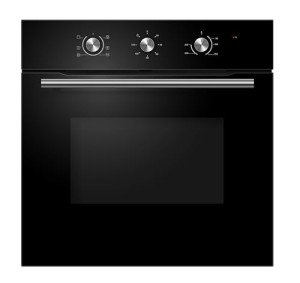Understanding Integrated Oven Sizes: A Comprehensive Guide
Integrated ovens have ended up being associated with modern-day kitchen areas, using streamlined aesthetic appeals and effective cooking services. As homeowners go for a smooth look in their cooking areas, understanding integrated oven sizes ends up being important for optimizing kitchen layouts and making sure efficient cooking. This post looks into the different integrated oven sizes offered in the market, their dimensions, and how to select the ideal one for your home.
What is an Integrated Oven?
An integrated oven is developed to be built into kitchen cabinets, offering a structured look that mixes easily with the rest of the kitchen. Unlike freestanding designs, integrated ovens can be hidden behind cabinets doors or positioned at eye level, making them a popular option for contemporary kitchen areas.
Key Features of Integrated Ovens
- Space-saving style: Optimizes kitchen area without jeopardizing design.
- Customizable surfaces: Available in numerous colors and materials to match kitchen decoration.
- Advanced innovation: Often equipped with modern-day functions, consisting of clever innovation, differing cooking modes, and energy-efficient operations.
Common Integrated Oven Sizes
When considering an integrated oven, the most critical element to examine is its size. Integrated built in oven and induction hob package come in various measurements, typically created to fit standard kitchen cabinets. The following table describes the most common integrated oven sizes:
| Oven Type | Height (mm) | Width (mm) | Depth (mm) | Cooking Capacity (litres) |
|---|---|---|---|---|
| Single Built-In | 590 | 595 | 550 | 60-70 |
| Double Built-In | 590 | 595 | 550 | 60 (each oven, overall 120) |
| Compact Built-In | 450 | 595 | 550 | 30-40 |
| Mix Microwave | 455 | 595 | 550 | 30-40 |
| Wall Oven | 720 | 600 | 550 | 70-90 |
Factors to consider When Choosing an Integrated Oven Size
When it comes to choosing the appropriate size for an integrated oven, there are several aspects to consider:
- Kitchen Layout: Evaluate your kitchen space and choose where the oven will be integrated into kitchen cabinetry.
- Cooking Needs: Consider how frequently you cook and your cooking choices (e.g., baking, roasting).
- Offered Space: Measure available cabinetry dimensions to make sure the oven fits comfortably.
- Capacity Requirements: Assess the size of meals you usually prepare, especially for households or when entertaining guests.
- Future-proofing: Think about integrating patterns such as wise technology or flexibility in usage.
Kinds Of Integrated Ovens
Integrated ovens are offered in several types, each offering distinct advantages:
- Conventional Ovens: Standard cooking functions, appropriate for the majority of cooking approaches like baking and roasting.
- Steam Ovens: Utilize steam for cooking, best for much healthier meals, maintaining wetness and nutrients.
- Convection Ovens: Circulate hot air for even cooking, excellent for baking pastries and several meals all at once.
- Microwave Ovens: Offer fast reheating or thawing options and can be combined with conventional ovens for flexibility.
Benefits of Integrated Ovens
Integrated ovens offer various advantages that can enhance the cooking experience:
- Aesthetics: Offers a clean design that fits perfectly into any kitchen décor.
- Area efficiency: Maximizes space by using built-in cabinetry.
- Ergonomics: Mounting ovens at eye level improves benefit and security when removing hot dishes.
- Increased functionality: Many integrated choices feature features such as self-cleaning and wise connection.
Regularly Asked Questions (FAQs)
1. What is the standard size for an integrated oven?
The most common size for a single built-in oven is roughly 590mm in height, 595mm in width, and 550mm in depth.
2. Can I set up an integrated oven in an existing kitchen?
Yes, as long as the existing cabinetry can accommodate the size and specifications of the chosen oven, it can be integrated flawlessly.
3. Do integrated ovens have a larger capacity than freestanding ones?
Generally, integrated ovens have a similar capacity to freestanding models; however, particular designs might vary. Always inspect the specs for optimum space and capability.
4. Are integrated ovens more costly than freestanding ovens?
Integrating an oven can be more pricey due to installation and modification. Nevertheless, prices differ based upon brand and technology, so it's necessary to compare alternatives.
5. Is upkeep different for integrated ovens?
Maintenance for integrated ovens is similar to that of freestanding designs but might require more care with built-in kitchen cabinetry elements. Regular cleansing and understanding the oven's functions are vital for durability.
Selecting the ideal integrated oven size is important for enhancing kitchen space and improving culinary experiences. By understanding the different configurations offered and thinking about specific cooking requirements, property owners can flawlessly integrate a modern oven into their kitchens. With a variety of designs to suit varied looks and functionalities, integrated ovens stay a popular option for contemporary cooking spaces. Whether you're remodeling or developing a brand-new kitchen, choosing an integrated oven tailored to your needs will make sure years of satisfaction and cooking imagination.

